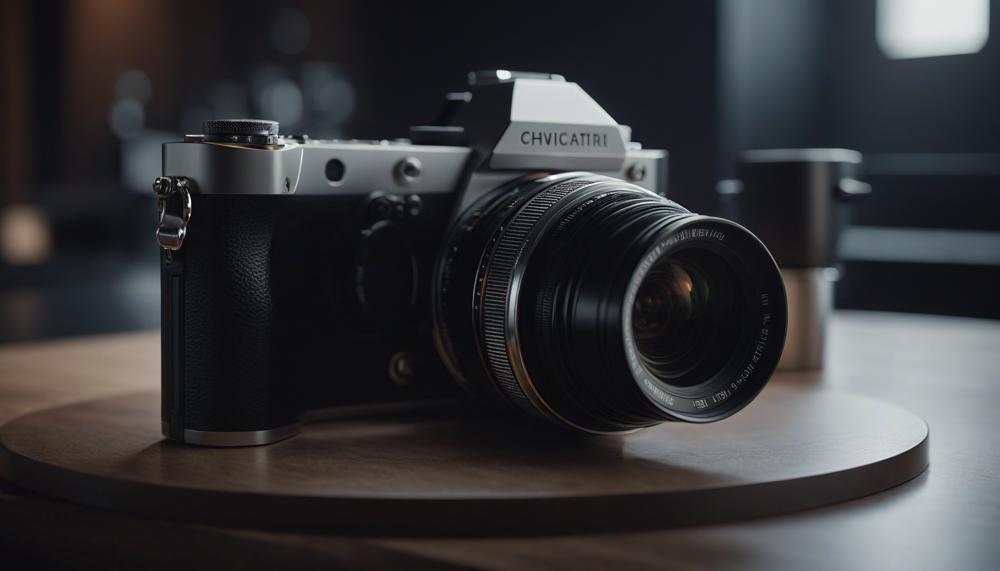Welcome to our in-depth exploration of the world’s most trusted adhesive: JB Weld. When it comes to heavy-duty repairs, JB Weld has long stood as the go-to solution for DIY enthusiasts, mechanics, and hobbyists alike.
But just how long can this esteemed epoxy hold its ground against the relentless forces of nature and time? In today’s blog post, we’re diving deep into the heart of durability, unearthing the secrets behind JB Weld’s long-lasting formula, and providing you with real-world insights into its performance.
Key Takeaways:

- Understanding the Chemistry: Get a grip on what makes JB Weld a powerhouse in bonding materials.
- Real-World Performance: Insights from various use cases and environmental conditions.
- Maintenance Tips: How to extend the life of your JB Weld applications.
- Comparative Analysis: See how JB Weld stands up against traditional welding and other adhesives.
Stick with us as we dissect the components, analyze user experiences, and deliver the ultimate verdict on the longevity of JB Weld. Whether you’re patching a pipe, mending metal, or crafting a creation, understanding the lifespan of your adhesive is crucial to ensuring a lasting repair.
Contents
- 1 How Long Will Jb Weld Last?
- 2 Factors That Affect the Durability of JB Weld
- 3 Proper Surface Preparation for Maximum Bonding Strength
- 4 The Importance of Proper Application and Mixing of JB Weld
- 5 Curing Time: How Long Does It Take for JB Weld to Reach Maximum Strength?
- 6 Recommended Temperature and Pressure Limits for JB Weld
- 7 External Factors That Can Affect the Longevity of JB Weld
- 8 Conclusion
How Long Will Jb Weld Last?
The lifespan of JB Weld is contingent on various factors, with proper application being pivotal. When wielded adeptly and in suitable conditions, it’s known to last for several years.
Key Factors Influencing Longevity of JB Weld
Material Compatibility
- Materials Bonded: The nature of the materials bonded plays a vital role. Metals typically offer better adhesion than plastic or wood.
- Surface Condition: Clean, dry, and rough surfaces ensure stronger bonds.
Application Technique
- Mix Ratio: Equal parts resin and hardener are essential for optimal strength.
- Even Application: Uniform application prevents weak spots in the bond.
Environmental Conditions
- Temperature: JB Weld is resilient up to 500 degrees Fahrenheit. Extreme temperatures beyond this can compromise the bond.
- Exposure: Prolonged exposure to harsh chemicals or environmental conditions can degrade JB Weld.
Curing Time
- Initial Set Time: Avoid stressing the bond during the initial 20-25 minute set time.
- Full Cure Time: A full cure, typically taking 24-48 hours, is critical for achieving maximum bond strength.
Managing Factors for Maximum Lifespan
| Factor | Management Strategy | Impact |
| Material Compatibility | Choose compatible materials and prepare surfaces thoroughly. | Enhances adhesion and bond strength. |
| Application Technique | Mix accurately and apply evenly. | Ensures consistent bonding strength across the joint. |
| Environmental Conditions | Minimize exposure to extreme temperatures and chemicals. | Preserves the integrity of the bond over time. |
| Curing Time | Allow ample time for curing without disturbance. | Maximizes the bonding strength and durability. |
In essence, JB Weld’s lasting power is influenced by how well these factors are managed. Its versatility and durability make it a sterling choice for numerous applications, yet its longevity hinges on meticulous application and conducive operating environments.
Factors That Affect the Durability of JB Weld
The main factors that can impact the longevity of JB Weld and the strategies to manage them for ensuring maximum durability are:
- Temperature: It’s pivotal for the curing process. Stay within the sweet spot of 50-90°F (10-32°C) to prevent a weak or brittle bond.
- Surface Preparation: Clean and roughen your surfaces before application. Dirt, oil, or smoothness can lead to bonding troubles.
- Mixing Ratio: Stick religiously to the prescribed resin-to-hardener ratio. Deviations can weaken the bond or prevent proper curing.
- Environment: Consider the exposure to vibrations, chemicals, and UV rays. Select the appropriate JB Weld variant for the environment.
Managing these factors effectively ensures the robustness and longevity of JB Weld bonds. Below is a table summarizing the factors and their management:
| Factor | Impact | Management Strategy |
| Temperature | Affects curing speed and bond strength | Maintain 50-90°F (10-32°C) during application and curing |
| Surface Preparation | Influences adhesive bonding efficiency | Clean and roughen surfaces prior to application |
| Mixing Ratio | Determines the cure strength and durability | Adhere to the recommended resin-to-hardener ratio |
| Environment | Can degrade the bond over time | Choose JB Weld type based on exposure conditions |
Proper Surface Preparation for Maximum Bonding Strength
To ensure JB Weld achieves its renowned mighty hold, a meticulous prep routine is paramount. Here’s the lowdown, stripped of fluff, on how to prime any surface for battle with JB Weld:
- Scrub-a-Dub-Dub: Kick things off by banishing grime, grease, and any unwelcome slickness from your surface. Reach for a degreaser or a swig of acetone to do the deed. Make sure it’s bone dry before you move to step two.
- Rough It Up: Next, you’ve got to give that surface some edge. Literally. Use sandpaper or a wire brush to scuff it up. The goal? Make it as grippy as a new set of tyres. Whether you’re wrestling with a smooth criminal like metal or a tough cookie like concrete, choose your abrasive wisely.
- Groove Is in the Heart: Now, for some fine artistry. Carve tiny grooves or scratches into the surface. This isn’t just busywork; those grooves are VIP lounges for JB Weld, letting it seep in deep for a bond that’s not just on the surface but in it.
- Clean Sweep: Before you bring in the JB Weld, give the surface one last spa treatment. Use compressed air or a vacuum to whisk away any dust or loose bits that could spoil the party.
- Prime Time: On some occasions, you’ll want to dress the surface up with a primer or an acid etch, especially if you’re dealing with metals prone to throwing a fit (like rusting). This step is like telling the surface, “We’re in this together.”
Check out the table below for a quick guide on what to use and when during your surface prep for JB Weld:
| Step | Tool/Material | Application |
| Clean | Degreaser or Acetone | Eliminate grease, oil, dirt |
| Roughen | Sandpaper or Wire Brush | Create a textured surface for better adhesion |
| Groove | File or Knife | Add grooves for deeper bond |
| Remove Debris | Compressed Air or Vacuum | Ensure surface is particle-free |
| Prime/Etch | Primer or Acid Etch Solution | Optional for metal surfaces to improve adhesion |
Stick to these steps like JB Weld sticks to… well, almost anything, and you’re all set for a bond that’s as steadfast as they come.
The Importance of Proper Application and Mixing of JB Weld
The essence of mastering JB Weld lies not just in wielding the tube but in the art of proper application and meticulous mixing. This practice ensures a steadfast, enduring bond, turning quick fixes into lasting solutions.
Key Missteps and Their Impact:
| Issue | Consequence | Impact on Longevity |
| Incorrect Mixing Ratio | Adhesive fails to cure fully. | Leads to a brittle bond, prone to cracking and breaking under stress. |
| Air Pockets/Bubbles | Creates weak points within the bond. | Increases likelihood of breakage and failure under minor pressure or shifts. |
| Poor Surface Preparation | Weakens adhesive grip. | Compromises weld integrity, risking detachment and failure. |
| Excess or Insufficient Adhesive | Causes stress or incomplete bonding. | Either strains the bond or leaves gaps, both of which can lead to failure. |
The finesse in mixing and applying JB Weld is not just about following steps; it’s akin to preparing a feast or setting a stage. Each action, from mixing in harmony to prepping the base with care, sets the scene for a repair that’s not just a fix but a restoration. Inexact mixing, akin to a chef failing the recipe, results in a concoction that’s off-balance, leading to a bond that’s shaky rather than solid.
Air entrapment, similar to bubbles trapped under wallpaper, mars the smooth landscape of a perfect fix, leading to a surface that’s flawed, ready to buckle under life’s pressures. Just like a building needs a solid foundation, the surfaces to be bonded demand cleanliness and precision, ensuring the repair stands tall against the trials of time.
In the grand tapestry of repair, too much or too scant JB Weld acts like a misplaced thread, either bulging unseemly or leaving a void too vast to sustain. Each misstep is a step away from durability, leading to a path where repairs are but temporary patches rather than monumental mendings.
Understanding the stakes, it’s clear why the alchemy of JB Weld application demands respect. It’s not just about sticking things together; it’s about weaving strength back into the fabric of our tools and treasures.
Curing Time: How Long Does It Take for JB Weld to Reach Maximum Strength?
JB Weld, renowned for its robustness and reliability in bonding, requires a touch of patience to achieve its full potential. After mixing the two components, the initial set time is about 4-6 hours. However, for JB Weld to reach its pinnacle of strength, a full cure period of 24 hours is essential. This duration ensures the adhesive has completely solidified, providing a formidable bond with a tensile strength of 3960 psi. Proper application and adherence to the curing time are key to unlocking the maximum efficacy of JB Weld.
| Stage | Time | Tensile Strength |
| Initial Set | 4-6 hours | Starts to harden |
| Full Cure | 24 hours | 3960 psi |
Mastering the art of JB Weld not only involves mixing and waiting but also ensuring that each step, from surface prep to application, is handled with care.
Recommended Temperature and Pressure Limits for JB Weld
Recommended Temperature and Pressure Limits for JB Weld
Temperature Guidelines:
The ideal conditions for using JB Weld demand specific temperature ranges. It’s not just about slapping it on; think of it more like brewing a good cup of tea – conditions matter. Here’s the breakdown:
- Optimal Ambient Temperature: Keep it between 10°C (50°F) and 38°C (100°F). Too chilly, and the bond takes an age to set. Too hot, and it’s a rushed job, weaker at the seams.
- Surface Temperatures: Match them. If you’re fixing a bike in the sun and a kettle from the cupboard, wait. Let them both sit out, reach a common ground, temperature-wise, for the best stick.
Pressure Guidelines:
JB Weld isn’t just about the mixing; it’s about the pressing too. Like a good handshake, the right pressure ensures a solid bond.
- Ideal Pressure: Aim for a steady 500 PSI (about 3.5 MPa). Not Hulk-smash level, but firm and unwavering, for a whole day.
- Curing Time: Give it time, a full 24 hours, under pressure, without jostling or knocking it about. Patience here is your ally.
Surface Prep Tips:
Before you even open that JB Weld tube, get your surfaces ready. Clean, degrease, and give them a little scuff for the perfect grip. Here’s what you’re aiming for:
- Cleanliness: No grease, dirt, or mystery kitchen gunk. A clean joint is a strong joint.
- Roughness: A bit of sanding creates the best base. Think of it as giving the JB Weld something to hold onto.
Practical Table for Clarity:
| Aspect | Recommendation | Why It Matters |
| Ambient Temperature | 10°C (50°F) to 38°C (100°F) | Ensures optimal curing and bond strength. |
| Surface Temperature | Match ambient temperature | Prevents curing issues and weak bonds. |
| Pressure | 500 PSI (3.5 MPa) | Needed for solid adhesion over 24 hours. |
In a nutshell, mate, stick to these numbers and prep work for your JB Weld projects.
External Factors That Can Affect the Longevity of JB Weld
The endurance of JB Weld, akin to the resilience of the human spirit, can be swayed by several external forces. Understanding these factors and the strategies to mitigate their impact is akin to navigating through stormy seas with a steadfast compass. Here’s a concise exploration:
| Factor | Impact on JB Weld | Mitigation Strategies |
| Temperature Extremes | Can cause weakening or failure of the bond. | Adhere to recommended temperature ranges during application and curing. |
| Moisture/Humidity | May affect curing process and final bond strength. | Apply in dry conditions and store in moisture-controlled environments. |
| Chemical Exposure | Some chemicals can degrade or dissolve the bond. | Use chemical-resistant variants of JB Weld for high-risk applications. |
| Physical Stress | Excessive force or impact can break the bond. | Ensure the application meets or exceeds the expected load requirements. |
| UV Exposure | Long-term sunlight exposure can weaken the bond over time. | Opt for UV-resistant formulations or shield the bond from direct sunlight. |
To ensure JB Weld lives up to its full potential, a bit of know-how and preventative care goes a long way.
Whether it’s choosing the right product for your specific application or preparing the surface with the diligence of a skilled craftsman, these steps are your bulwark against the vagaries of time and environment.
Conclusion
In conclusion, JB Weld emerges as a Herculean adhesive, its durability echoing the tales of Greek mythology in the world of repairs. Like any legend, its longevity is a tapestry woven from several critical factors. Material compatibility, precise application techniques, environmental conditions, and the sanctity of curing times are the pillars upholding the temple of JB Weld’s strength. This adhesive isn’t just a product; it’s a testament to human ingenuity, turning fleeting fixes into lasting legacies.
When applied with the precision of an artist and the understanding of a scientist, JB Weld transforms from mere glue to a bond as steadfast as the bonds of time. It navigates the treacherous waters of temperature extremes, laughs in the face of moisture and chemicals, and stands undaunted against physical stress and UV rays. A masterful blend of science and practical wisdom, JB Weld is not just about sticking things together; it’s about fusing elements with a strength that rivals the very materials it binds.
Remember, JB Weld is more than an adhesive; it’s a commitment to durability.





